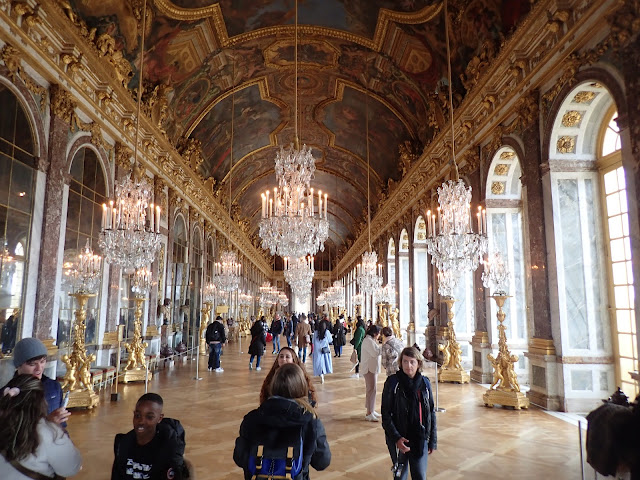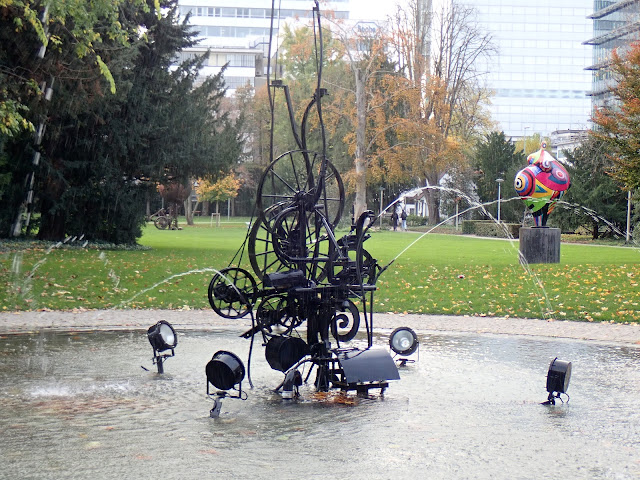Leaving Athens, we flew to Cairo anticipating the start of our 2 week Egypt - Jordan tour with G Adventures. We were brought down to earth quickly staying at a hotel that the Pharaohs would not have wanted their name associated with. Cairo, with it's 10 million citizens, busy streets and a layer of smog hanging overhead, was not a city you would want to spend a lot of time in, and two days was plenty for us. Our tour group of 14 was comprised of 7 Americans, 4 from the UK, 1 from Germany, and us two gypsies. Our Egyptian guide was well versed in Egyptian history and kept us all out of trouble with his excellent advice. Our initial activity was to visit the Pyramids in nearby Giza, part of the reason we all came on board. After seeing so much fifth to sixth century BC history in Greece, we were now standing in front of the majestical structures dating back to the 26th century BC. The 3 pyramids, Khufu, Kharfa and Menkaure, were built as tombs for the 3 Pharaohs.....a bit extravagant considering it took approximately 100,000 labourers, 20 years to build just Khufu's pyramid (Great Pyramid). We have told our children we wish for something much simpler. From there we returned to Cairo to visit the Egyptian Museum which housed thousands of ancient treasures, including many from the tomb of Tutankhamun, a more recent discovery (1922).
We left Cairo in the evening and took an overnight train south to the city of Aswan, arriving 12 hours later, the next morning. A small boat took us across the Nile to the Philae Temple on Agilkia Island. As impressive as the temple was, its recent history was even more so. The Aswan Low Dam was created in 1902 to prevent the Nile from flooding Egypt every rainy season. With the completion of the High Aswan Dam in 1970, its previous location on Philae Island was about to be mostly submerged, so they built sandbanks connecting the two islands, disassembled the stone block temple and moved it to higher ground, where it stands today in its original form. The High Dam also displaced some Nubian villages, causing some unrest, but homes were built for them across the river from Aswan. Later that day we were treated to traditional dinner in a Nubian home by a local family. On our second day in Aswan, with a 4 am start, we took a 4 hour bus ride south to the Temple of Abu Simbel, 60 km from the border with Sudan. With several checkpoints along the way, it basically became a road race amongst the drivers with everyone attempting to improve their spot in ensuing line-ups. Abu Simbel is one of Egypt's grandest temples and at the same time a modern marvel, since it also had to be moved to higher ground due to the creation of expansive Lake Nasser, resulting from the High Dam. Built during the reign of Ramses II (1279 - 1213 BC), this Pharaoh had a bit of an ego. Temples were built to honour the gods but the Great Temple at Abu Simbel features four massive, seated Ramses statues at the front, 8 Ramses column statues inside and in the sanctuary at the back, he is seated in between 3 gods, seemingly indicating he is at their level.
A new experience started the following morning. Checking out of our hotel, we walked 100 metres with our bags to the Nile and boarded a felucca, a small Egyptian sailboat, heading north towards Luxor. Our group was split onto two boats, allowing everyone to spread out on the mattress deck which was also going to be our starlit bedroom overnight. A companion boat followed us, providing meals, alcoholic beverages (a rare find in Egypt), and bathrooms. There was also a short stop, providing an opportunity for everyone to swim in the Nile, which was refreshing on a hot day. After breakfast the next morning, the sails were raised but only for a short trip across the river, where we boarded a bus to take us the rest of the way to Luxor. Along the way to our hotel, we stopped into two temples. Kom Ombo, on the banks of the Nile, was dedicated to 2 gods, one being a crocodile god, and there was even a crocodile mummy in the museum. (This temple sat at a bend in the Nile. Every flood season, crocodiles camped across the river, resulting in many lives lost, animal and human. It was believed that if they deified the crocodiles, perhaps fewer lives would be lost. Hence the crocodile god.) The massive Karnak Temple in Luxor was more impressive, once being the centre of all religious life in ancient Egypt. The site was constantly expanded by successive Kings, each wanting their own temple to the gods to be built. Our second day in Luxor was a tour highlight, with a visit to the Valley of the Kings. The New Kingdom (1550-1069 BC) realized that pyramids had become a target for tomb raiders, so they decided to secretly hide them, carving tunnels (hallways) leading to a sanctuary inside the stone base of the valley hillsides, and then covered them up to protect them. They were eventually discovered and while the jewels and gifts have now been moved to various museums, it was still a treat to enter the tombs with ancient paintings extending 50-100 metres into the hillside. King Tutankhamun's tomb contained his mummified remains and we can only hope that we look that good 3,000 years from now. That evening we had a dinner celebration for the end of our Egypt time with our CEO (Chief Experience Officer) and 4 other group members who were not continuing on to Jordan with the rest of us. Our group had gotten along well and we enjoyed the camaraderie. Once we arrive in Amman, Jordan today we will be met by our Jordanian CEO and at least one special addition to the group, our Swiss daughter who will be rejoining us once again on this adventure. More excitement lies ahead.
 |
| The Pyramids of Giza, built in the 26th and 25th centuries BC. Easy targets because of their size, they were plundered in ancient times and the treasures inside the tombs for the kings have never been recovered. |
 |
| The colossal limestone statue of the Sphinx (lion's body and human face) in a relaxed mode. The Egyptian sphynx's role was to protect temples. Perhaps this one was a bit too relaxed, since it didn't prevent the Pyramids from being robbed. |
 |
| On our way to catch the small boat ferry to the Philae Temple. There was never a wait for a ferry since they were plentiful and eager to get the business. One poor fellow's engine died shortly after takeoff, and he had to turn our business over to a competitor, who was happy to help out. |
 |
| Noticed this while walking through the Nubian village on our way to dinner at a local's house. Beyond goats, we observed chickens and other friendly creatures living in the small backyards of homes lucky enough to have some private space. |
 |
| The Giant Temple at Abu Simbel, with one of the 4 enormous Ramses II statues in front partially damaged by an earthquake. Since this temple was built into a hillside rather than stone blocks, its relocation to another island was even more remarkable. |
 |
| A storage room inside the Great Temple at Abu Simbel, that was still worthy of some artistic work. Ramses II also built a temple for his wife next to his, but he made sure it as a lot smaller. |
 |
| While in Aswan we visited the souk (market) and came across these pigeons for sale. While it would have been nice to think they were being purchased as racing (messenger) pigeons, they seemed to turn up on a lot of our menus. |
 |
| One of our two feluccas being tied up during a periodic visit from our companion boat. It was always a good relationship because it meant a washroom was available, a meal was about to be served, and adult beverages were available. |
 |
| Our arrival at the massive Karnak Temples. Successive kings had added their own temples to the complex, enlarging it with every new ruler. The protective Sphynxes didn't have any issues with us passing through |
 |
| The Funerary Temple of the of Queen Hatshepsut, one of the very few female Pharaohs in ancient Egypt. The three tiered temple backed into the cliffside and featured elaborate hieroglyphics, reliefs, paintings and statues. |
 |
| The Ramses V and VI tomb in the Valley of the Kings. Due to their hidden nature in the cliffsides, they were well preserved and the wall art condition improved the further you walked along the tomb hallway. |
 |
King Tutankhamun himself at the endpoint of his tomb. When discovered in 1922, the treasures were all recovered and most have been moved to the Egyptian Museum in Cairo. The treasures have been featured in exhibitions around the world over the years since.
|






















































